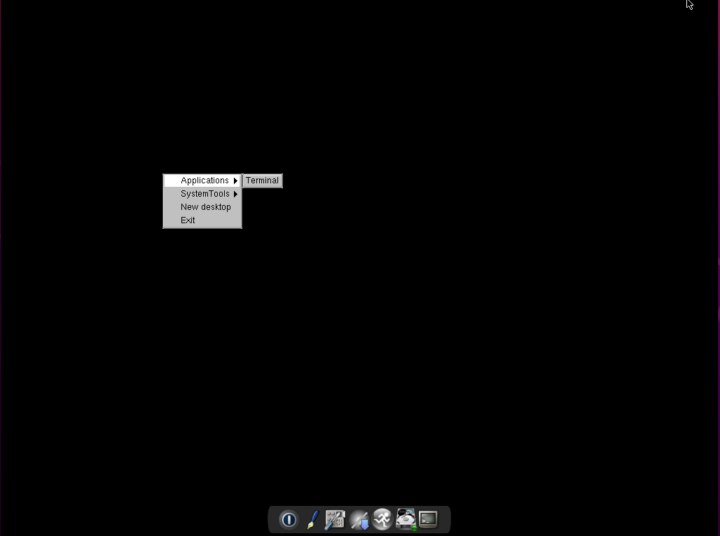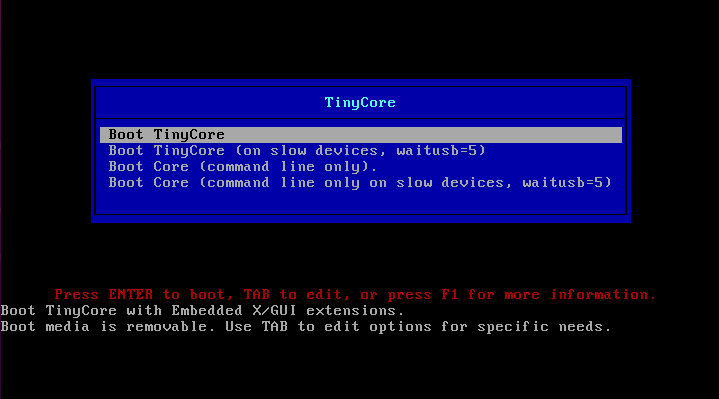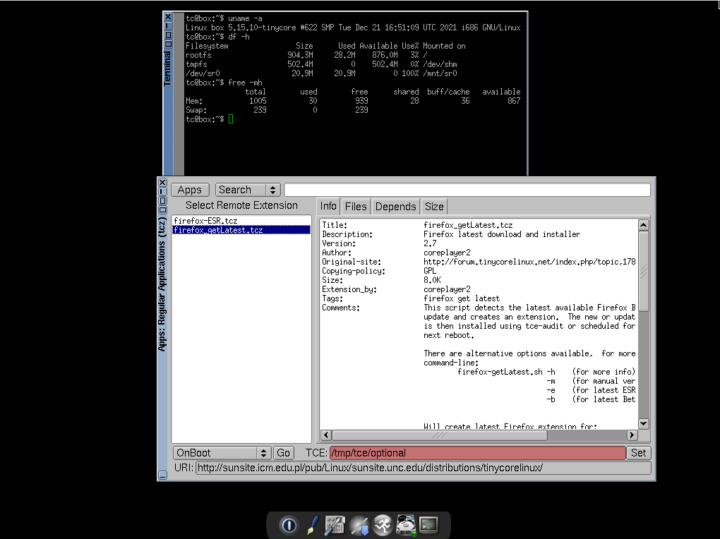Tiny Core Linux 13.0 has just been released for 32-bit and 64-bit x86 systems with a recent Linux 5.15.10 kernel, and various upgrades to the packages.
Tiny Core Linux is a lightweight (~22MB ISO) Linux distribution with an FLTK (Fast Light Toolkit)/FLWM (Fast Light Windows Manager) desktop and based on the Core Project that integrates a recent Linux kernel, vmlinuz, and a root filesystem with low footprint libraries such as busybox. It’s mostly interesting for older or low-end hardware that may be slow and/or unusable with more common Linux distributions like Ubuntu or Debian.

Tiny Core Linux 13.0 main changes:
- kernel updated to 5.15.10
- glibc updated to 2.34
- gcc updated to 11.2.0
- binutils updated to 2.37
- e2fsprogs base libs/apps updated to 1.46.4
- util-linux base libs/apps updated to 2.37.2
- busybox updated to 1.34.1
- 50-udev-default.rules: add media permissions
- select: require that “break” used in awk scripts
- filetool.sh: prevent gratuitous change to .filetool.lst’s timestamp from bdantas
- tce-update: if no directory specified for “list” or “query”, default from bdantas
- tc-config: Move nodhcp static_ip earlier, from andyj
I’ve quickly tried the 32-bit ISO in VirtualBox and was offered to boot it with a GUI or command line, but an option for slow devices waiting for USB for a period of time. The desktop environment (shown in the first screenshot above) is very basic with just five icons are the bottom. The only application installed is the Terminal, but you can add more including Firefox through the menu.
Right after the first boot, the system used around 30MB of RAM and 30MB of storage.
While the recent announcement is about Tiny Core Linux 13.0 for x86 systems specifically, there are also versions for the Raspberry Pi boards with PiCore v13.1 released last November 2021 compiled with either armv6, armv7, or Aarch64 flags. You’ll find the x86 and Arm images by browsing 13.x release directory.
More details may be found in the forum’s announcement.

Jean-Luc started CNX Software in 2010 as a part-time endeavor, before quitting his job as a software engineering manager, and starting to write daily news, and reviews full time later in 2011.
Support CNX Software! Donate via cryptocurrencies, become a Patron on Patreon, or purchase goods on Amazon or Aliexpress






